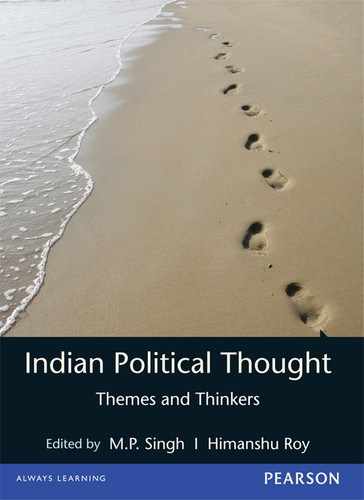Introduction
1. The term ‘militant nonviolence’ was first used by Erikson (1969).
2. Dharma, more or less comparable to the concept of ‘Justice’ in Plato’s Republic, is a key concept that runs through the ages in ancient Indian social and political thought. The ideal of Dharma has three loci, namely (a) in the individual, i.e., in the right ordering of the psychic tendencies of satva (truth), rajas (domination), and tamas (banality); and the balanced pursuit of dharma (dutifulness), artha (materiality), kama (desire, sex), and moksha (redemption); (b) in the society, i.e., in the performance of the duties of the four-fold varna system comprising the classes of Brahmins, Kshatriyas, Vaishyas and Shudras; and (c) in the state [rajadharma or rightful statecraft]. The concept of dharma with modifications recurs in the Vedas, epics, Gita, Manusmriti, Kautilya’s Arthashastra, Ashoka’s edicts, and Jain and Buddhist texts. For a recent addition to the sprawling literature on Dharma, see Adam Bowles (2007).
3. For a somewhat similar but more comprehensive typology of nationalist thought and action in India, see Mahendra Prasad Singh (1980). It comprises the following types of political inclinations, tendencies and orientations: (a) Retreatism and acculturation: The nationalism of liberal socio-religious reformers and Congress Moderates, (b) Hindu revivalism: The nationalism of Congress Extremists and terrorists, and (c) the Gandhian synthesis: the nationalism of militant nonviolence.
4. Several commentators on modern Indian political thought have used the concept of Indian Renaissance as the historical background of the emergence of political thought in contemporary India (e.g., V P. Varma, 1993: Chapter 1; V. R. Mehta 1996, Chapter 8). However, Varma clubs the terms ‘Renaissance, Enlightenment and Nationalism in India’, whereas Mehta uses the term ‘Renaissance’ alone and associates it to the ‘Beginnings of Modern Thought in India’. The Indian Institute of Science in Bengaluru has put up Chapter II of its publication Torch Bearers of Indian Renaissance, with the caption ‘Pursuit and Promotion of Science’ with brief intellectual portraits of modern Indian scientists and statisticians. A sketch of Sir C. V. Raman, the Indian Nobel Laureate in physics (1930), adorns the front page (www.iisc.ernet.in). Obviously, Indian Renaissance is imprecisely multifaceted and apparently a wide-open conceptual hold-all.
